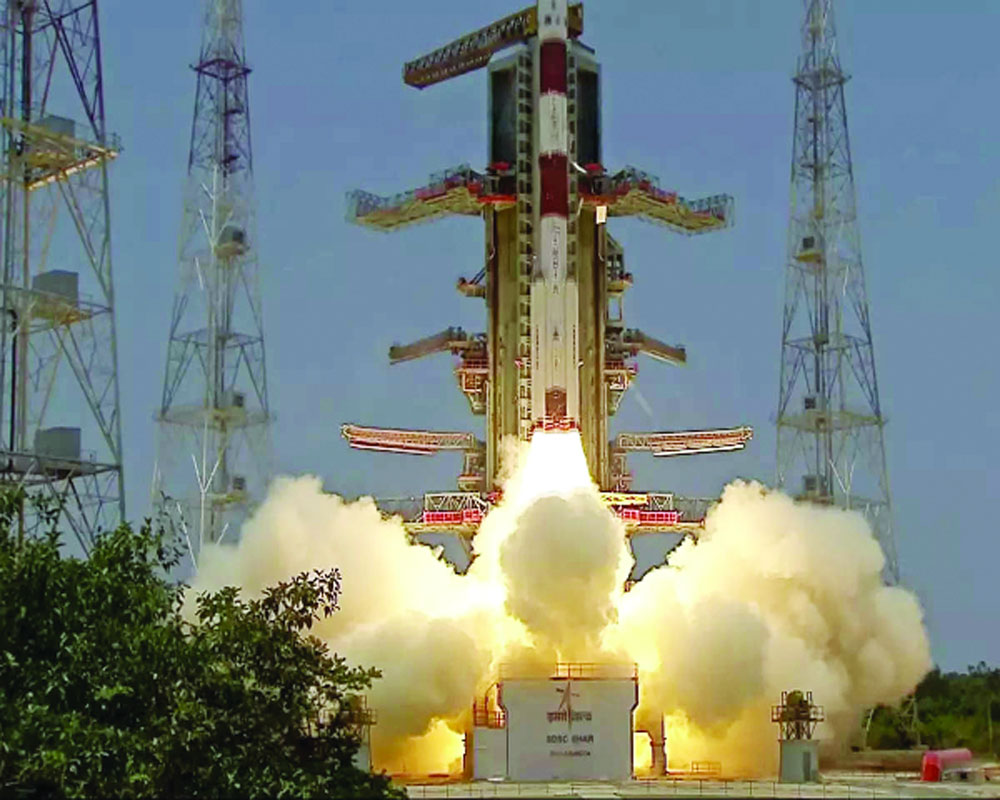India’s maiden solar mission — Aditya L1 — on Saturday set off on a 125-day journey to the Sun in its attempt to study various elements relating to Earth’s nearest star, after being put into the orbit by a PSLV rocket that touched a new technical milestone in the launch vehicle segment.
Prime Minister Narendra Modi on Saturday congratulated the Indian Space Research Organisation (ISRO) and its scientists on the successful launch of the country’s first solar mission. “Our tireless scientific efforts will continue in order to develop better understanding of the universe for the welfare of entire humanity,†he said on “Xâ€.
The spacecraft, after traveling about 1.5 million km from the Earth over 125 days, is expected to be placed in a Halo orbit around the Lagrangian point L1 which is considered closest to the Sun.
Among others, it will send pictures of the sun for scientific experiments.
According to scientists, there are five Lagrangian points (or parking areas) between the Earth and the Sun where a small object tends to stay if put there. The Lagrange Points are named after Italian-French mathematician Joseph-Louis Lagrange for his prize-winning paper — “Essai sur le Problème des Trois Corps, 1772.â€
The Sun is a giant sphere of gas and Aditya-L1 would study its outer atmosphere. Aditya-L1 will neither land on the Sun nor approach it any closer, ISRO said. The objectives of the Aditya-L1 mission includes study of the coronal heating, solar wind acceleration, Coronal Mass Ejections (CME), dynamics of solar atmosphere and temperature anisotropy.
Following Saturday’s launch Aditya-L1, weighing about 1,480.7 kg, stays in Earth-bound orbits for 16 days, during which it undergoes five manoeuvres to gain the necessary velocity for its journey towards the Sun.
Project Director Nigar Shaji said, “I am extremely happy that Aditya L1 has been injected into the precise orbit flawlessly by PSLV as always. And Aditya L1 solar panels are deployed and it is being normal,†she said.
Once Aditya L1 is commissioned it will be an asset to heliophysics of the country and even to the global scientific fraternity, Shaji added.
Upon arrival at the L1, another manoeuvre binds Aditya-L1 to an orbit around the point, which is a balanced gravitational location between the Earth and the Sun.
The spacecraft spends its whole mission life of five years orbiting around L1 in an irregularly shaped orbit in a plane roughly perpendicular to the line joining the Earth and the Sun, ISRO said.
The strategic placement at the L1 Lagrange point ensures the spacecraft can maintain a constant, uninterrupted view of the Sun. This location also allows the satellite to access solar radiation and magnetic storms before they are influenced by Earth’s magnetic field and atmosphere, the space agency informed.
Additionally, the L1 point’s gravitational stability minimises the need for frequent orbital maintenance efforts, optimising the spacecraft’s operational efficiency. Aditya-L1 will stay approximately 1.5 million km away from the Earth, directed towards the Sun, which is about 1 per cent of the Earth-Sun distance.
It carries seven scientific payloads to carry out the study.
The Visible Emission Line Coronagraph, which studies the solar corona and dynamics of Coronal Mass Ejections (CME), will be sending 1,440 images per day to the ground station for analysis on reaching the intended orbit.
Union Minister Jitendra Singh, who witnessed the launch from the Mission Control Centre (MCC) here, dubbed it as a “Sunshine moment†for the country.
“Congratulations! The Aditya-L1 spacecraft has been injected in an elliptical orbit of 235/19,500 km which is intended very precisely, by the PSLV, a very unique mission mode here, with the upper stage of the PSLV taking two burn sequences for injecting the primary satellite for the first time,†ISRO Chairman S Somanath said from the MCC.
The Solar Ultraviolet Imaging Telescope payload images the Solar photosphere and Chromosphere in near Ultraviolet and also measures the solar irradiance variations.
The Aditya Solar Wind Particle Experiment (ASPEX) and Plasma Analyser Package for Aditya (PAPA) payloads study the solar wind and energetic ions as well as the energy distribution.
The Solar Low Energy X-ray Spectrometer and the High Energy L1 Orbiting X-ray Spectrometer (HEL1OS) study the X-ray flares from the Sun over a wide X-ray energy range.
The Magnetometer payload is capable of measuring interplanetary magnetic fields at the L1 point.
The Science payloads of Aditya-L1 are indigenously developed with the close collaboration of various centers of ISRO.
Union Minister Singh, who holds the Science and Technology portfolio, said “while the whole world watched this with bated breath, it is indeed a sunshine moment for India.â€
“Thank you Prime Minister Narendra Modi for making this happen by opening up new vistas for India’s space sector and telling us sky is not the limit,†he said.
He also thanked the PM for giving the confidence, courage and the conviction to reach out to the stars and to discover the mysteries of the universe beyond.
The other space agencies that have already launched solar missions are the US’ National Aeronautics and Space Administration (NASA), Japan’s JAXA, the European Space Agency (ESA).
The Advanced Space-based Solar Observatory (ASO-S) was successfully launched by National Space Science Center, Chinese Academy of Sciences (CAS), in 2022.


























